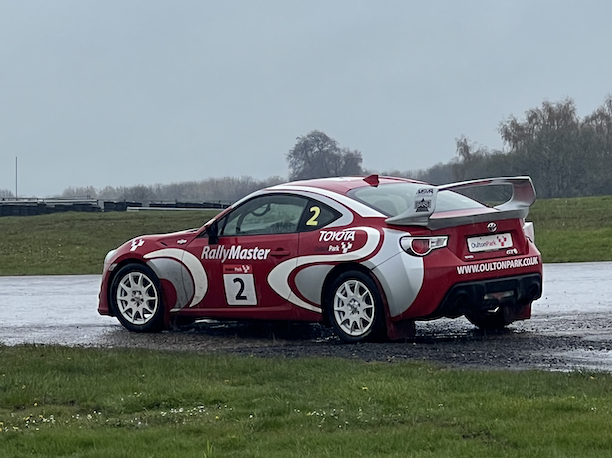When you think of drifting, many people will visualise 1,000bhp hugely modified japanise cars smoking their tyres on a track somewhere near Toyko.
Drifting is big in Japan – and also in many other countries. But don’t for one minute think you need to have a track monster to be able to enjoy drifting. We attended Oulton Park in April 2023 for a client driver training session with a difference. They offer drifting days, which are open to the general public – all you need is a RWD (rear-wheel drive) car, a helmet and a willingness to have fun.
While drifting is great fun, from a driver training point of view, it’s something everyone should do. The drifting at Oulton Park takes place on two of their tarmac rally stages, which are around 700 metres in length each. We arrived at Oulton Park at around 8 am where we signed on – we had to show our driving licences. We then had a safety briefing at 8:30. At 9 am all drivers did a familiarity lap of both stages.
ESP. No ESP
The objective of the day was to feel the car breakaway and how it behaves with ESP on and off in very wet conditions. Usually, the tracks are made wet by a water sprinkler – which makes sliding much easier for drifters. However, it rained lots, all day, so sprinkling was certainly not needed.
We started off with the ESP (also known as stability control) fully on – while a great safety feature, when trying to drift, it is intrusive. On a slippery road where you certainly do not want to slide or drift in any form, it is good. You can feel the car applying the brakes on each corner of the car in varying sequences and cutting power when needed to keep you on course – the ESP warning light flashing up on the dash confirms this.
If you do push too hard, despite the ESP being on, sometimes a skid (a drift) would result. It is important to know with ESP, it can only manage/redirect the grip it has available – it cant create more. If you push too hard, the car WILL slide. Never rely too much on driver aids.
So next, we put the ESP on sport mode – this is designed for drivers who still want assistance, but the ESP allows slightly more loss of control/skidding before stepping in – ideal for track day driving. On a very wet track, we found it was virtually no different to when it was fully on. This is because there was so little grip to work with. The sheer lack of grip meant the slightest skid was actually quite severe and thus triggered the eager to serve ESP.
Next, we switched it off fully – no ESP. This meant there were no driver-aids ready to help us out. We were able to slide the car, use the throttle to slide the back out and use the steering on opposite lock to varying degrees to hold the slide. We were drifting! Drifting is essentially power oversteer where the rear of the car has less grip than the front and is triggered by sharp use of the accelerator (power) to create this oversteer. That is why rear-wheel drive (RWD) is needed.
Some of the cars there were highly modified drifting cars with insane levels of negative camber on the front wheels. They were good fun to watch and showed us what can be done with the right car. Our training car, a BMW Z4 3.0 has an open differential, which means holding a drift was quite hard – we really needed an LSD (limited slip differential) if we were to hold longer, more controlled drifts. However, the session was all about experiencing a car losing control – which we experienced lots, sometimes we “achieved” a 360-degree spin, as we were not quite quick enough to save the car with an opposite lock.

What did we learn?
We provided the client with a better understanding of what happens when a car breaks away on a very wet surface. We also provided insight into how ESP works, and it’s limitations when on very wet surfaces. We also had some great fun trying to hold a drift. While holding a drift has no real relevance to road driving (or track driving, for that matter), it is good fun. Once a car’s rear end steps out, you will want to get things back in shape as quickly as you can – it’s safer for road use and saves time when on the track. Drifting goes against everything, really – you are purposely applying the throttle to create oversteer and then holding it. It’s the holding it which underpins drifting.
Driting is not something we teach, but attending such a session allowed us to experiment. We recommend it to anyone. It’s like a skid pan but more fun.

